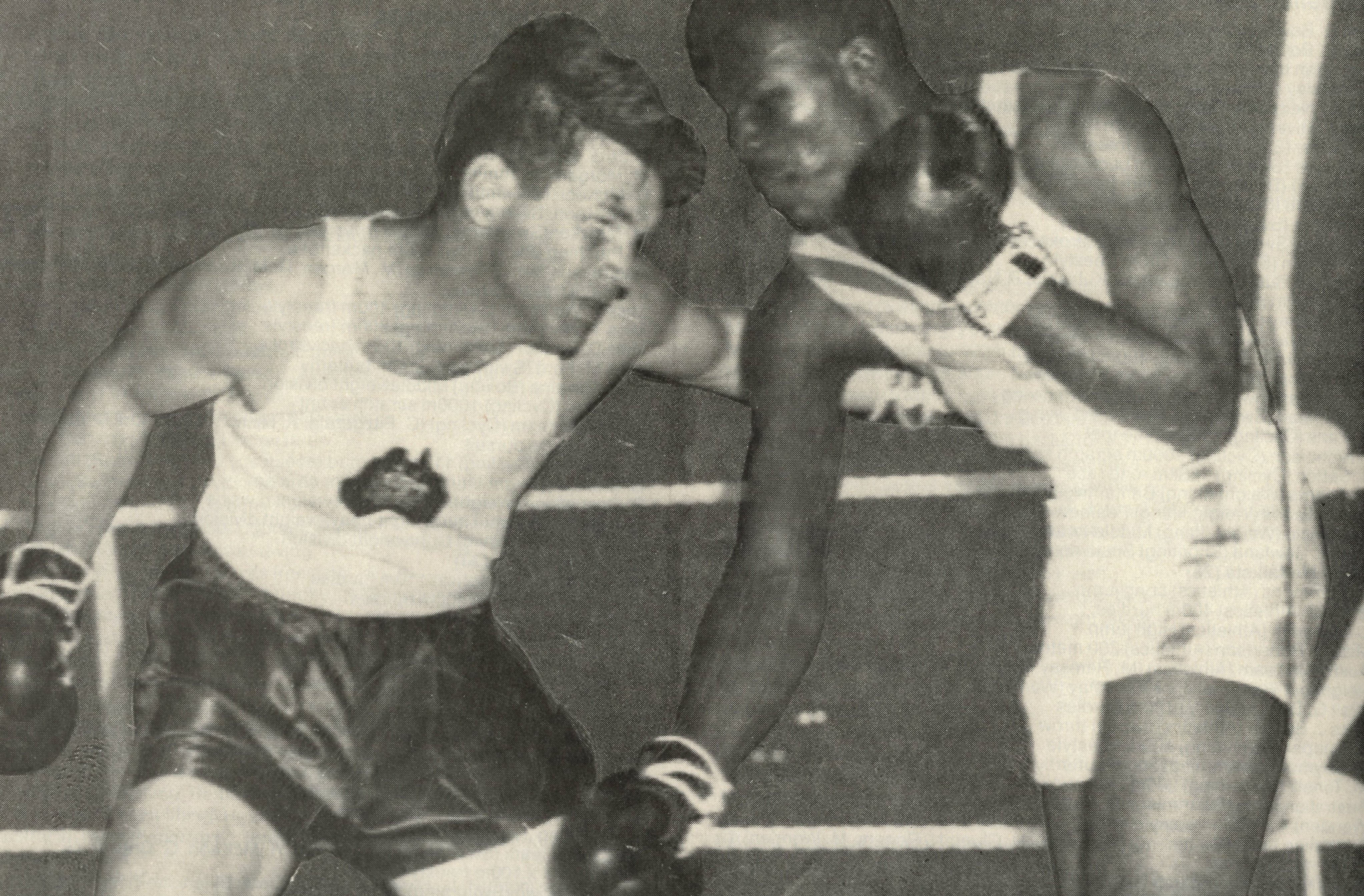
IMAGE|| Tony Madigan in his boxing final at 1962 British Empire and Commonwealth Games against Ghana’s Jogo Miles
By David Tarbotton
Tony Madigan was a pioneer of Australian boxing.
He was one of just five Australians to win an Olympic boxing medal and the most successful boxer in Commonwealth Games history with two gold and a silver medal. He resisted numerous offers to turn professional which allowed him to play amateur rugby union around the world and throughout his boxing career which included twice bouts against a young Muhammad Ali. Australia’s greatest amateur boxer, Madigan, passed away on Sunday in France aged 87.
Born in Sydney in 1930, Madigan played rugby while at school at Ashfield DLS College and Waverley College. After graduating in 1948, he continued to play for Randwick and Eastern Suburbs and in London and New York through to 1962, a period which coincide with the most successful amateur boxing career in Australian history. But it would be boxing which he would shine at.
Shortly after his mother, Kendall Madigan died of cancer, the young Madigan, aged eight, took up boxing. At high school he was the school’s boxing champion for four years. After school he started training at Erin McQuillan’s gym and won the NSW middleweight title in 1949 and by 1951 the Australian title which earned him selection for the 1952 Olympic Games. He raised money for his Olympic campaign by boxing in the country and at his old school and even in railway workshops.
Going into the Helsinki 1952 Olympic Games with an injured left hand, he was defeated in his first bout against eventual bronze medallist Sweden’s Stig Sjolin in a 0-3 decision. He remained in Europe after the Games winning matches in Ireland, Wales and England. In 1954 he won the British title at Royal Albert Hall. Later that year he made his British Empire and Commonwealth Games debut in Vancouver. At the Games, in the absence of trainers and assistants, he was made captain and coach of the team. He won his first light heavyweight match against Canada’s Bill Misselbrook with the referee stopping the contest in round one. But he lost the final against South Africa’s Piet Van Vuuren in a split decision.
After the Games he retired and returned to London. In 1955 in Germany he was involved in a serious car accident where the passenger died. He returned to Australia to seek selection for the Melbourne Olympics, where he was defeated in the quarter-finals by Russian Romualdas Murauskas in a decision. He won the 1957 Australian light heavyweight title ahead of competing at the 1958 Cardiff British Empire and Commonwealth Games. He prepared in a gym above a fruit shop in Cardiff’s markets. He won his quarter and semi-final matches in decisions over E Morrison (NZL) and Gerhardus De Bruyn (RSA) respectively. In the final he again won over local favourite and professional soccer player Robert Higgins (WAL). He won the 1958 and 1959 Diamond Belt, an international tournament symbolic of the world title between Olympic Games.
On March 25, 1959 at the Chicago Stadium he boxed a 17-year-old Cassius Clay. The much anticipated match was broadcast nationally and viewed by a crowd of over 7000. After three rounds it was a close fight with Clay getting the decision.
Now living in New York Madigan worked as a model to support himself, appearing in magazines and on television for cigarettes, beer and men’s products. He returned to Australia and won the opportunity to go to his third Olympics in 1960 in Rome. It was a chance for a rematch against Cassius Clay.
His campaign in Rome started with a good win over Swede Lars-Olof Norling in a 5-0 decision. He knocked out Romania Gheorghe Negrea in the next round – his quarter-final match. This matched him against Clay in the semi-final where he was defeated in a decision. The judges had given Clay the win scoring it 60-57. Sydney journalist Ernie Christensen, the crowd and Italian newspaper Palazzo della Sport didn’t agree with the decision. Madigan had to settle for bronze with Clay going on to win the gold.

Madigan continued to fight in New York and returned to Australia in 1962 for the British Empire Games where he was given the honour as Australia’s flag bearer. He was unstoppable at the Games, with three consecutive wins in round one, the quarter-final and semi-final, two requiring the referee to stop the fight. In the final he defeated Ghana’s Jogo Miles in a decision. He had become the first athlete in history to retain his Commonwealth Games title. He made an attempt to qualify for the 1964 Tokyo Olympics, but a couple of losses led him into retirement.
Post his career he lived largely in Great Britain and France. He is survived by his wife Sybilla whom he married in 1960.
